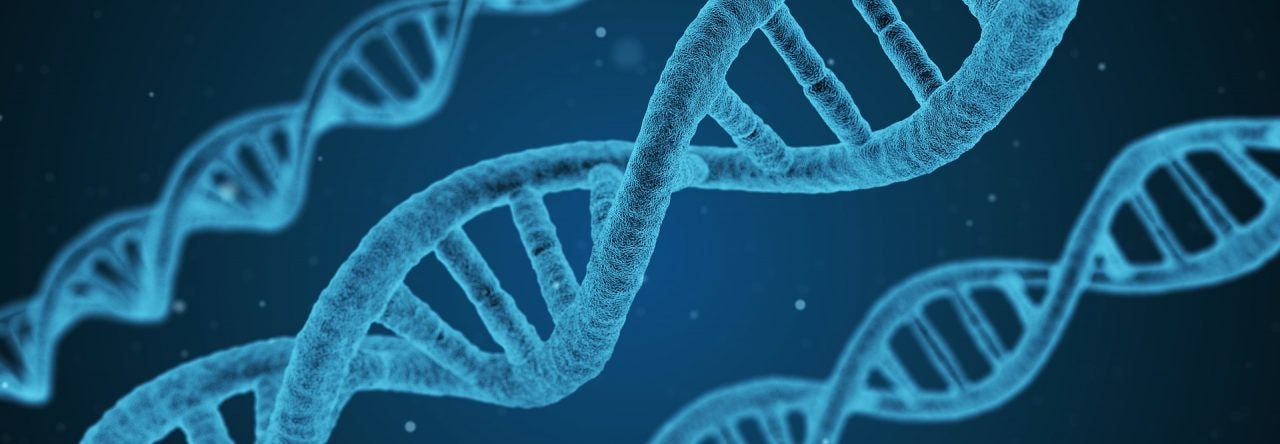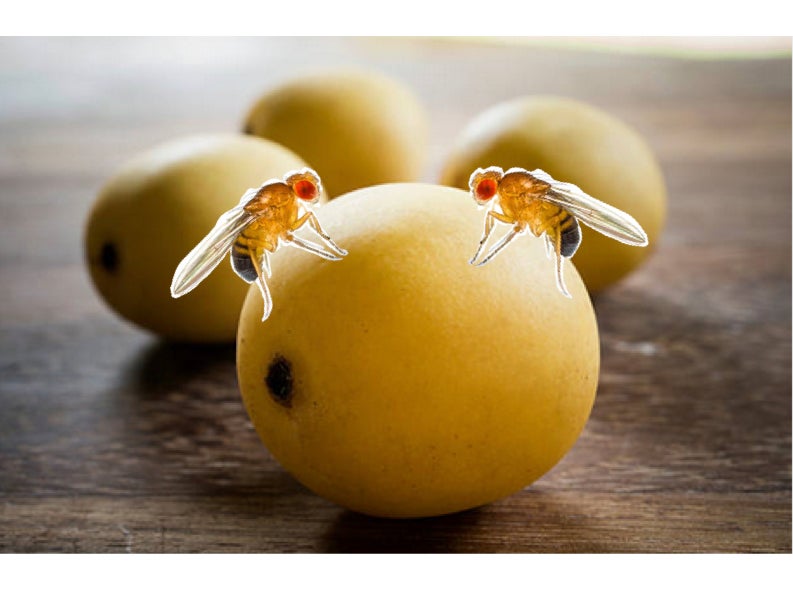Author: Anna Feitzinger
Editor: Sharon Lee
Undeniably, you have seen a flurry of little fruit flies whizzing around left out bananas or oranges on a kitchen table. This little pest has been co-living, or commensal, with humans for thousands of years. But almost all of Drosophila melanogaster’s closest cousins, with the exception of Drosophila simulans, don’t enjoy human company (1) – so how did this specific species become so chummy with man? Researchers from Lund University have published their discoveries (2) of previously unknown aspects of the natural ecology of one of the longest standing model organisms, which may explain how D. melanogaster became a human commensal and spread across the world.
Like humans, D. melanogaster has its origins in Africa. D. melanogaster migrated out of Africa and began to colonize Europe and Asia an estimated 10,000 years ago (3) . Given the commensal nature of D. melanogaster, it is no surprise that it has become one of the most widely used model organisms. Despite it’s annoyance around ripened fruit, the chromosomal theory of inheritance, genetic control of early development, and fundamental principles in neurobiology, population and evolutionary genetics all have a basis in D. melanogaster research. Given the century-long use of D. melanogaster in the laboratory, it is surprising that few fundamental aspects of the natural ecology of D. melanogaster is known. Interactions of organisms with their environment drive adaptation, shaping their evolution and inevitably the present day biology that we study. It has been said that D. melanogaster lives where it eats, and for the first time we now know the likely ancestral host of D. melanogaster: the marula fruit.
Suzan Mansourian and colleagues set out to Matopos National Park in Zimbabwe to determine the host fruit of wild South African populations of D. melanogaster. The extremely abundant marula fruit has a similar pH to an orange, a highly fermentable pulp and contains terpenes and esters which are known olfactory cues for D. melanogaster. These characteristics, paired with the fact that domesticated D. melanogaster’s favorite breeding substrate is the orange, made the marula fruit the perfect candidate. Indeed, wild D. melanogaster were found in fly traps containing marula placed on the forest floor.
To test the hypothesis that flies from native habitats prefer marula to other fruit, the researchers placed paired traps containing either marula or orange under fruiting marula trees. D. melanogaster showed a strong preference for the marula fruit, although their sister species D. simulans, also native to the region, did not. Traps containing marula placed in locations with no fruiting marula trees, but other fruiting trees, caught none or very few D. melanogaster. These experiments have garnered D. melanogaster a new title: seasonal specialists!
How do domesticated flies react to marula fruit? Canton-S strain flies, originally collected sometime before 1916 in Canton, Ohio, prefer marula when given the choice between orange and marula. This conserved preference is impressive given that marula is not found outside sub-saharan Africa. To determine what specific chemical mediates this preference, the researchers tested major chemical components in a two-choice assay and found a high preference of esters responsible. Furthermore, using functional imaging of transgenic flies, the primary marula ester ethyl isovalerate was shown to activate Or22a-expressing olfactory sensory neurons (ab3a/b). In contrast, odor from oranges triggered weak to no activity. Silencing of the Or22a pathway using RNAi reduced the ability of flies to localize to marula compared to controls, suggesting that this pathway is responsible for detection and localization to marula.

If the Or22a circuit is linked to the specific chemistry of host fruit, Mansourian et al reasoned that local adaptation of the Or22a receptor would be found in fly populations from environments which contain different hosts. To investigate this, olfactory receptors sequences from 10 different African genomes and 1 European genome were analyzed. They found that Or22a and its adjacent paralog Or22b indeed showed genetic differentiation, a sign of local adaptation, between populations in contrast to other olfactory receptors. Next, they wanted to know if the sequence differences in Or22a and Or22b between populations confer functional changes. Measurements from ab3a neurons in a strain carrying a prevalent African variant of the receptor, Or22a/b (a fused gene as a result of a deletion), was found to be even more sensitive to the marula ester than non-African flies, confirming that the genetic differences are functional.
The now-vanished San tribes, known for their elaborate cave paintings, inhabited the Matopos during the Late Pleistocene to Early Holocene periods. Like D. melanogaster, the San appear to also have been seasonal specialists on marula – in one cave alone at least 24 million marula pits were recovered. This link may explain how D. melanogaster became a human commensal – wandering into San inhabited caves to feast on marula. Interestingly, traps placed inside the caves caught a number of D. melanogaster, but not D. simulans. The estimated date of the within-Africa expansion of D. melanogaster corresponds roughly with the date that marula harvesting ceased. D. melanogaster may have become dependent on marula harvesting by the San and when this ceased left the region with the San as a human commensal. Thus, the marula fruit may have been the glue that brought humans and one our most beloved model organisms into cohabitation, sparking their migration across the world and eventually into our present day laboratories.
Descendants of the ancient San have long been an interest to researchers. A 2010 paper in Nature showed that there is more genetic diversity between two San genomes than between an Asian and European genome (4). More recently, the San people became the first African group to draft a code of ethics for researchers who use their sequencing data (5). Although the use of the marula fruit by the ancient San ceased about ~10,000 years ago, it is still used commercially today both in beverages and cosmetics. Perhaps enjoying amarula, a cream liqueur made from marula, will help give a taste of what brought man and D. melanogaster together.
Author: Anna Feitzinger
- Keller A (2007) Drosophila melanogaster’s history as a human commensal. Curr Biol 17(3):77–81.
- Mansourian S, et al. (2018) Wild African Drosophila melanogaster Are Seasonal Specialists on Marula Fruit. Curr Biol 28(24):3960–3968.e3.
- Pool JE, et al. (2012) Population Genomics of Sub-Saharan Drosophila melanogaster: African Diversity and Non-African Admixture. PLoS Genet 8(12). doi:10.1371/journal.pgen.1003080.
- NordlingMar L (2017) San people of Africa draft code of ethics for researchers. Science | AAAS. Available at: http://www.sciencemag.org/news/2017/03/san-people-africa-draft-code-ethics-researchers [Accessed February 6, 2019].
- Schuster SC, et al. (2010) Complete Khoisan and Bantu genomes from southern Africa. Nature 463(7283):943–947.
San Code of Ethics available to read here: http://www.globalcodeofconduct.org/affiliated-codes/

